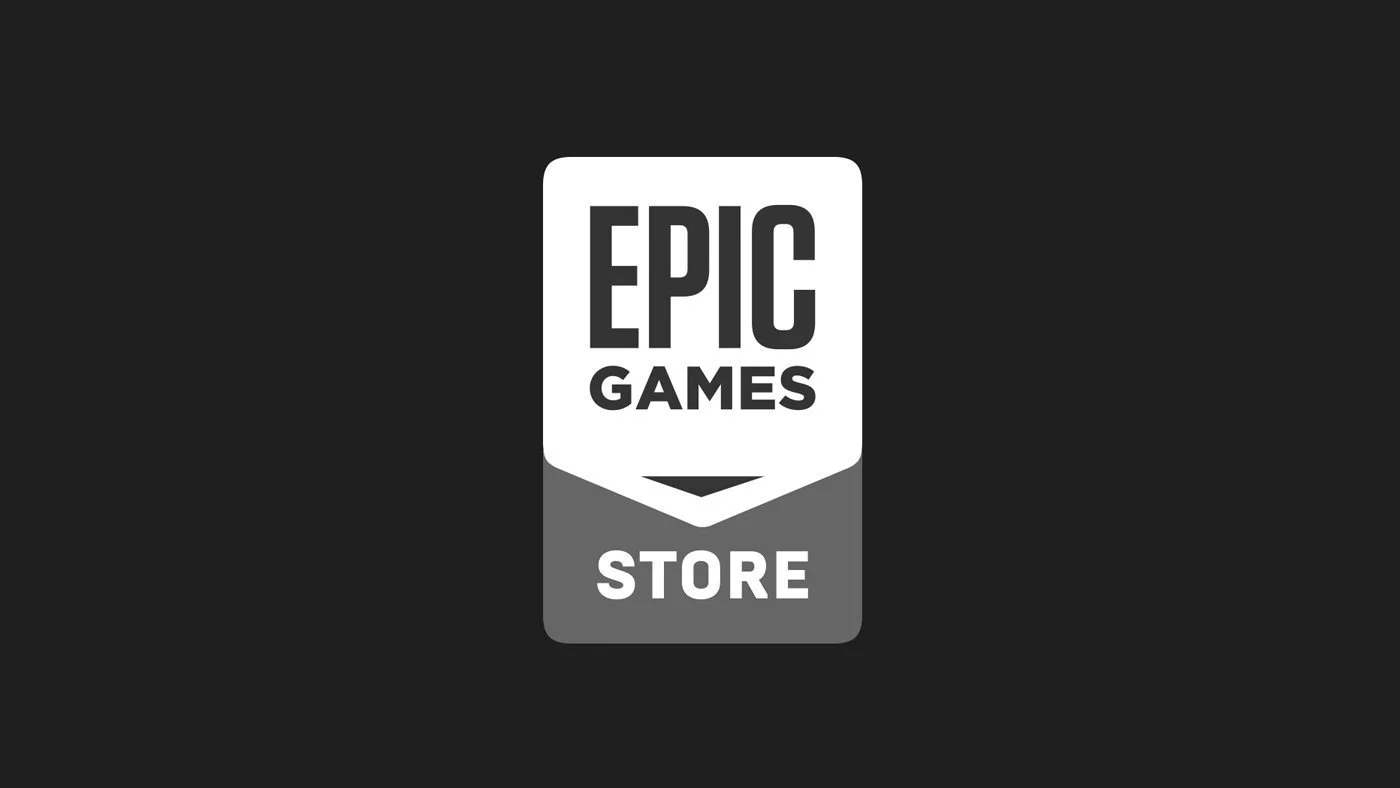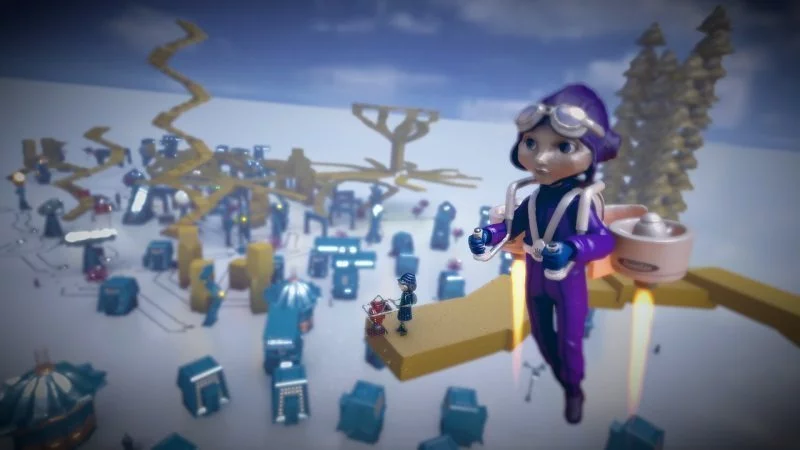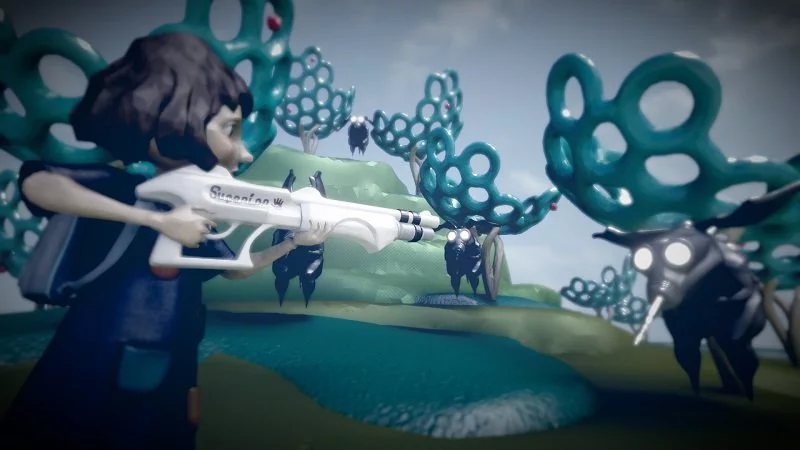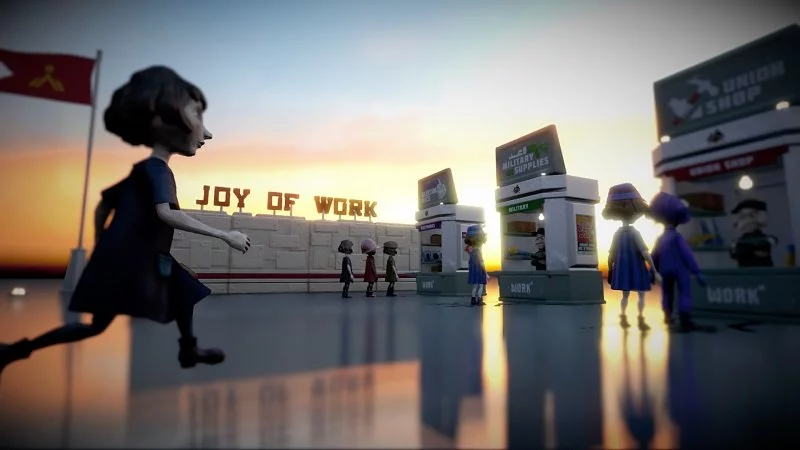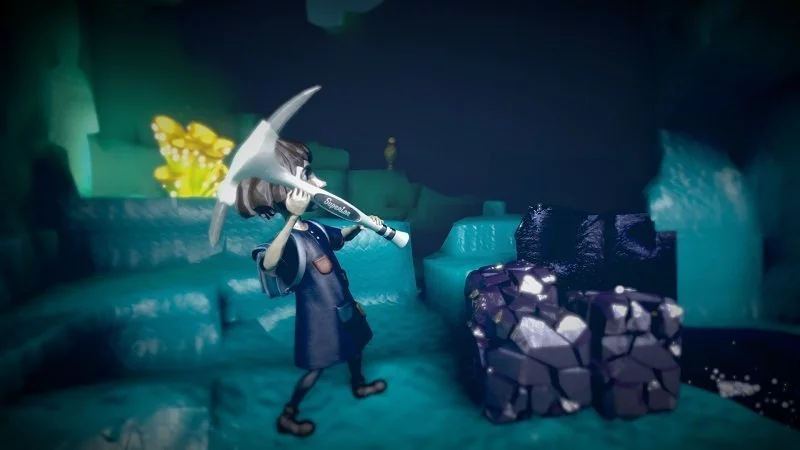Despite my dozens (and dozens) of readers (and despite how good I look in a moneyhat), you might be shocked to learn that I have to supplement my games writing career with a 9-to-5 office job to make ends meet. In my life I have become well acquainted with the drudgery of repetitive, pointless labour poured towards goals of no personal benefit beyond getting the chance to do it again all the sooner, rewarded only by subsistence in the form of cold, hard cash and the chance to buy games. The Tomorrow Children is a good reason to reconsider that approach.
The Tomorrow Children strikes many of the most derided aspects of modern gaming; an early access, free-to-play mining and resource gathering game with town building, tower defence and a clicker inspired drive to make arbitrary numbers go up. The core loop is monotonous and tragically short, the extra-curricular combat and minigames are dire, and the town building, social and cooperative aspects woefully underdeveloped. In its current state The Tomorrow Children as a free-to-play experience is a waste of time; paying for this privilege is something only the masochistic would do.
The key phrase there is “in its current state”. The Tomorrow Children is lacking in content, polish and direction but there is hope here in its premise. By far the most interesting aspect is the world itself; you are one of many Soviet Russian projection clones who are sent out into the Void, what remains of the planet after an experiment went apocalyptically wrong and merged most living beings into a single entity. You mine and mine to build and build, occasionally finding Matryoshka dolls that can be reanimated into humans who live in the towns your hard labour creates. There is little done with this interesting premise in terms of a story but hope lives on that this will become something more.
Soviet Russia is a rich deposit for a game to mine and what The Tomorrow Children does best is create a sense of both camaraderie and dread. The air is thick with propaganda, from videos playing on public monitors to posters, loudspeaker announcements and private transmissions. At every turn the game drives you to work for the greater good, to slowly earn meagre rewards such as better pickaxes, chainsaws and shovels, or the right to drive or build a home that offers no benefits beyond its representation of citizenship. If you have ever wanted a communist peasant simulation (and never felt much like freezing to death on a potato farm) boy are you in luck.
There are fleeting moments where this camaraderie works. Mining is done on islands in the Void, interesting but soon repetitive scenery that is hacked apart for its resources with quickly degrading tools and hauled in a pathetically stingy inventory. The idea is for groups to work together, some hacking away with their axes and shovels, others transporting resources to and fro, some keeping the paltry variety of smaller enemies at bay. Forming a clone chain gang doesn’t do much to ease the inherent dullness of The Tomorrow Children but there is comfort in knowing you are not suffering alone.
Sadly, The Tomorrow Children doesn’t provide chances for this kind of interaction nearly often enough. There are no group building goals or any reason to work together beyond faster resource gathering. You only see other players when they are interacting with an object nearby or making one of several gestures. For every moment where you try and get two clones to recreate the finger touching scene from E.T using the point gesture you will have others where you are fingered as a troublemaker by a griefer and thrown in clone jail, doomed to repeat a QTE for several minutes in an attempt to escape. Indeed my clone was last seen incarcerated for having the gall to use the workbench, where she will remain until The Tomorrow Children becomes a more interesting game. The cooperative aspect of town building is limited by the lack of communication options, the towns I worked to build all ended up looking like a very similar mess of dwellings and illogically placed shops, monuments and if you were lucky, defensive structures on the outskirts to fend off monsters.
Combat in The Tomorrow Children is even less rewarding than the labour forced upon you. Close quarters combat with shotguns and shovels lacks solid hit detection and any real sense of contact and weapons are a nightmare to aim. Just to cap things off the most common small enemies can fly, too. Larger scale combat is similarly unsatisfying, you shoot projectiles from turrets at lumbering monsters that absorb your firepower without flinching, taking extraordinary amounts of damage to bring down for good. The only sense of cooperation is that you and several others are shooting in the same direction, just like everything else in The Tomorrow Children combat is more of a grind than a game.
This was the premium experience, too. Early access grants you a stack of the premium currency, used to increase your inventory size, buy licenses to use weapons, vehicles and better tools, purchase (much) better gear or most importantly to bribe officials. There is a charm to using premium currency to bribe your way around government red tape but at its core you are just paying to circumvent tiresome mechanics such as imprisonment, a sliding block puzzle minigame and even death. If The Tomorrow Children opened its free-to-play version now I pity those who don’t start with a stack of cash to get around the horrible inventory limits and license system.
For how long you spend waiting for buses, mining resources and standing in line to use buildings and shops (seriously), you can see most of what The Tomorrow Children has to offer in a few sessions. Void islands repeat, enemy variety is limited and there is just too little to do that can’t be improved by late game perks no matter how much faster they let you mine, move or earn. There isn’t enough to build and not enough reason to do so, there is no exploration or cooperation, just the same three enemies attacking your town that looks the same as the last five you helped fill with identical doll-like people spouting the same few phrases. The Tomorrow Children does feature some impressive graphical achievements and the lighting effects will be worth the free download alone for anybody who is excited by the term HDR, and the art style is haunting yet beautiful. These feats are matched by some equally shaky performance, hard crashes are being widely reported (I experienced two myself).
A cooperative, massively multiplayer Animal Crossing meets Minecraft meets Tower Defence sounds like a great idea, but The Tomorrow Children doesn’t do enough in any of these directions to be a worthwhile purchase in its current state. Those who love resource gathering and increasing numbers will have the best chance at finding fun here but those expecting even a shallow town building simulation or combat experience will be sorely disappointed. It turns out communism isn’t the only idea that works better in theory than practice.
The Tomorrow Children is currently available in a $29.95 AUD “Founders Pack” and is intended to open free-to-play access at a later date. The “Founders Pack” grants you $2,000 in virtual currency (worth $30 AUD) and some of the early licenses to skip some of the grind. The premium currency drops at a reasonable rate but is used frequently, it is on the generous side of the free-to-play scale overall. I don’t recommend looking at it until the free-to-play aspect is available and the amount of content is increased.
The Tomorrow Children was reviewed using a promotional code on PS4, as provided by the publisher. We will refrain from issuing a review score until the retail version of the game is made available.
This article may contain affiliate links, meaning we could earn a small commission if you click-through and make a purchase. Stevivor is an independent outlet and our journalism is in no way influenced by any advertiser or commercial initiative.



